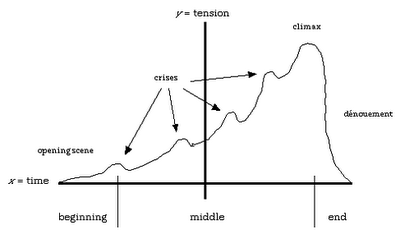In an information-obsessed culture, people are consuming more content than ever.  And for industry experts looking to share valuable information and insights with others, this makes the prospect of creating consumable content more enticing than ever.
For newer folks, the general advice is to write publish the content as the first step to success.  Then once the content is out in the world, then start focusing on refining your content creation/writing skills it as you go. This philosophy on content creation makes the barrier to entry low, which can be good.
Now, a low barrier to entry for creating content is good in some situations –  like writing content in the form of blog posts. Why is that, you ask? Well people that read your content usually do so by their own volition and can easily bail if it doesn’t meet their expectations.
However, for those giving presentations – that is not sound advice. Those same rules of “just getting it out there” don’t apply for presentations. People can technically bail, but often don’t because it’s too rude. Although, what will result from a presentation not tailored enough for an audience is that attendees will whip out their phones and start texting, tweeting, emailing and anything else they can do to make good use of their time.
Tailoring your presentation is what makes a presentation go from “ok” to “great.” It’s what shows your audience that you have respect for them and their time, which indicates you are a professional.
By taking the time to understand them and their needs, you will be sure to make a positive first impression and make your content more relevant and valuable from the very first slide.

Warning: Avoiding this important step in the content creation will harm your presentation – like a lot. Not only will it look like you didn’t take it seriously, but it can also make a knowledgable speaker look less credibility on a topic.
Below please find some of the considerations when creating a presentation, so you can tailor it to them:
Speak with the person who has hired you.
Before you even begin to create the content of the presentation, connect with the person who hired you (or that is orchestrating the event) so that you’re able to ask few questions about the audience.
The questions should help you be more aware of who you’ll be presenting to and what your message may look like to them. Also, the information they share should help be your guideposts for the stories you tell, the statistics or facts used and even the language used in the presentation.
Questions like these can help you learn what you’ll need in order to craft the right message:
- Tell me a little bit about the audience of this presentation.
- What is their general attitude on this topic?
- What types of information resonates well with them?
- Where do they usually go for information on this topic? Where do they usually go for information in general?
- Do they appreciate high level overviews or more nitty gritty details and best practices?
- Did anybody present on this topic last year? How did it go over and what did the audience like about that?
- Is there anything else you’d like me to know about speaking to this audience?
One cautionary note here – while it may seem as though this person has a great understanding of these details, often times they don’t. It’s important to listen to what they think and use it to guide your presentation, but don’t neglect the items below – as creating content in a vacuum can be dangerous.
Get a list of attendees & conduct research.
What better way to know who you’ll be educating or entertaining than by doing a bit of preliminary research on the folks who will be there. Ask the person who has hired you fi they have a list of attendees. That way you can do some research to understand some of the important details like:
- Their basic level of understanding of the topic. For example, if you’re speaking about inbound marketing, you can see the current state of their marketing efforts and knowledge by viewing their website and the content they’ve made available.
- Find out what makes them tick and who they are as a collective group. Doing a quick Google search might be able to bring up some helpful information around who they are. Find their social accounts, their blog posts or even some information about them and their role.
- Look at some of the news around the companies attending. This can let you see if there is some major breaking news in the industry or anything worthy of mentioning. This small detail can go a long way in demonstrating to your audience that you do, in fact, care about them.

Speak to people who fit their persona.Â
Do you know anybody that fits the attendee persona? If so, make the most of this connection. These people can be the intermediaries between you and your audience. Try out the overall story arc to see if it resonates and has the impact that you’re looking for – and then when you’ve nailed that – try out your stories, statistics, and jokes with them to gain and understanding of their perception of your presentation.

Look at topics discussed last year.
This one piece of quick research can give you insight as to the topics discussed before, letting you know exactly what level of knowledge and education you can expect from the audience.
This was one tip I wish I knew before speaking to a completely unfamiliar audience. I did all of the items above, but neglected to look at previous agendas. Then when I got to the conference, I looked at this year’s agenda and was shocked to see that the audience was may more familiar with the topic than i had been lead to believe.
Understanding your audience will shed light as to what content to cover, how to cover it and even which examples or jokes to use for your specific crowd.
Lastly, look at other details like time of day &Â size of the audience.
Will you be the first presenter of the day? Or maybe you’ll be closing out the entire conference.  Or maybe you’re right after lunch, which just so happens to be heavy coma-inducing food.  Use this knowledge and situation to determine the appropriate energy levels that will keep the attention of your audience, but not overwhelm them.
The size of the audience will dictate just how formal, informal or interactive your session can be. Larger groups usually benefit from a more formal presentation with rhetorical questions and slight interactivity. Whereas a smaller group begs more interaction which can be used to pull the audience in, ask them questions they can answer on the fly and even get them participating in the content.
Want to see an example of a speaker creating an amazing experience with a large group and making it interactive? Check out Jane McGonigal’s TED talk below: